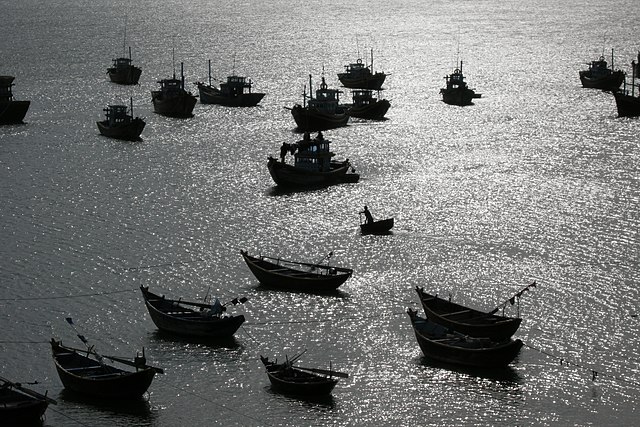Vietnam is making headway to ending Illegal, Unreported and Unregulated (IUU) fishing inside and beyond its sovereign waters.
During a stakeholder meeting with PM Pham Minh Chinh on October 21, 2025, it emerged that 8 out of 21 urgent assignments had succeeded.
The PM had on October 14 assigned all 21 coastal provinces these tasks, covering the October 15-November 15 chief fishing season.
Regional successes include Ho Chi Minh City, which on October 20 reported zero vessel seizures in international waters through 2025.
The city’s Sub-Department of Fisheries & Fisheries Surveillance reported 4,857 registered boats after eliminating 53 damaged vessels before October 17.
Some 900 fishing boats or 20% of the city’s fleet are still grounded for not meeting anti-IUU stipulations.
Thanks to its 24-hour vessel monitoring system (VMS), the city has been able to contact ships and prevent border violations. The contact system echoes Malaysia’s Electronic Port State Measures (e-PSM) for rounding up IUU cases in nearby tuna fisheries.
Upon finding fault with vessels, the VMS disconnects them, virtually rendering them non-operational.
By the the third week of October, the system had identified 711 vessels as highly likely to present IUU dangers.
What is at Stake?
In giving costal provinces a say in fishing regulation matters, Vietnam is meeting several local and international targets.
Internationally, it is providing regular catch origin reportage to the European Commission (EC) to assuage this major buyer of local shrimps.
Vietnam is currently under a “yellow card” status in the EC’s monitoring system – and is striving to unyoke this label.
The country is also enhancing its seafood import inspections to reduce the intake of fish from illegal fisheries.
On the local score, fishers must get governmental dispatches before disembarking, alongside connections to VMS infrastructure.
Catch origin certification is also progressing, with Ho Chi Minh City issuing >1,300 cards for over 14,000 tonnes of seafood, beginning 2024.
The national government has stated that it will blame local governments rather than fishermen if its yellow card status remains put. This labeling is the focus of the following statistics on IUU fishing.
Vietnam IUU Fishing Statistics
Vietnam is a country in southeast Asia with a population of 93.5 million (2015). Its rugged north-south coastline measuring 3,260 km on the South China Sea swarms with shrimp, clams, sea snails and other species. This location gives the country seafood riches but does not prevent Illegal, Unreported and Unregulated (IUU) fishing. Globally, IUU leads to 23.9-46 billion Eur ($27.7-53.4 billion) in governmental losses annually, according to the EIAS.org. And because the European Union (EU) imports some 34% of the global seafood cache, it has been championing IUU since 2010. Vietnam falls under a 2010 classification as a “yellow card” territory due to high IUU violations. This classification did not change even after the European Commission inspected national progress in October 2024.
What is Vietnam’s IUU index ranking?
The IUU Fishing Index gives scores to countries based on their performance. In 2023, the world had a 2.28/5 score, meaning only 50% stability, with 0 score being the stability target. Vietnam had a coastal score of 3.00 and on overall IUU score of 2.57, a worsening by 0.24 points from 2021 rankings. This effectively put the country in the 17th worst position out of 152 nations. Vietnam’s ally, China, had the highest universal risk at 3.69 index points while Russia followed with 3.20.
How does a yellow card affect fish trade in Vietnam?
Having a yellow card is bad for Vietnam’s seafood economy since the EU is a major export destination. In the 2012-17 period, for example, seafood exports by Vietnam to the EU represented up to 22% of all aquatic exports. With the EU tightening its anti-IUU rules each year, Vietnam’s export share there has been falling by at least 5% annually as of 2020.
